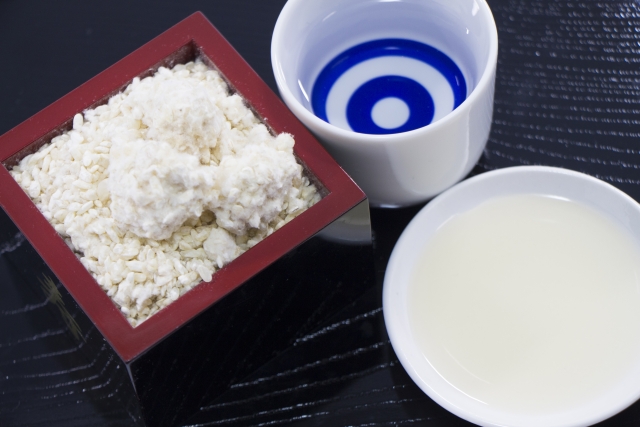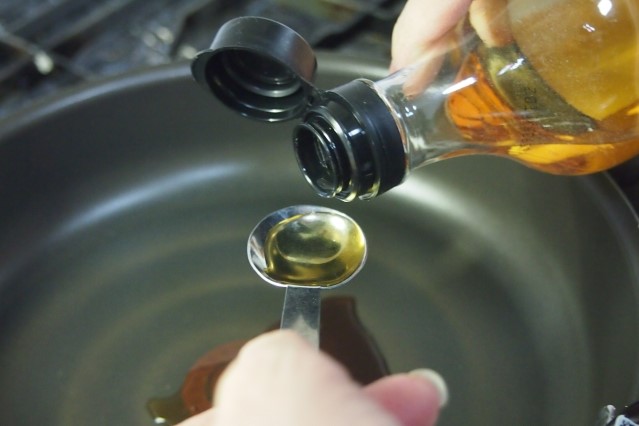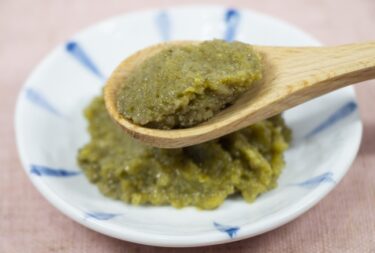Mirin is a sweet brewed sake made from glutinous rice, rice jiuqu, and brewed alcohol, and is used as a seasoning in Japanese cuisine.
Adding mirin has various effects such as adding natural sweetness to the dish, eliminating the smell of fish, and improving the color of the dish.
Although the alcohol concentration is 14%, the alcohol evaporates and does not remain in the dish because it is heated after adding mirin. When you can master mirin, you are said to be good at cooking.

What is Mirin and can I eat it?
Materials of Mirin
Glutinous rice, rice jiuqu, brewed alcohol, sugars, yeast
| Gluten-free | Low-gluten | Wheat-free | Low FODMAPs | |
| for Vegetarian |
| Food supermarket |
How to make and use Mirin, the difference from Cooking Sake
Mirin is one of the indispensable seasonings for Japanese cuisine. It is used for the following purposes;
- Add natural sweetness to dishes,
- Prevents the ingredients from collapsing when making simmered dishes,
- Eliminate the smell of fish and meat,
- Gives luster to dishes.
The raw material for mirin is glutinous rice.
Unlike the Indica rice that is eaten in Southeast Asia and India, the rice that is eaten in Japan is called Japonica rice, which has a short grain length. Japonica rice can be divided into two types: glutinous rice and non-glutinous rice.
“Non-glutinous rice” is the raw material for what Japanese people eat as rice and sake, and “glutinous rice” is the raw material for rice cake (mochi).
Mirin is made by mixing steamed glutinous rice with rice jiuqu, adding brewed alcohol and sugar, and fermenting it at room temperature for 2 months.

Let’s sort out the differences from sake.
| Mirin | Sake | |
|---|---|---|
| Ingredients | Glutinous rice, rice jiuqu, brewed alcohol, sugars, yeast | Non-glutinous rice, rice jiuqu, yeast |
| Fermentation period | 60 days | 30 days |
| Alcohol concentration | 14% | 13-18% (20% when fermentation is complete) |
| Color | Yellow to orange | transparent to slightly yellow |
| Sugar | Glucose 24%, and maltose 2.6% | Glucose 2.3% |
Mirin and sake have almost the same alcohol concentration, but mirin contains 27% sugar, so it is sweet. However, since the ingredients are glucose and maltose, the sweetness is slightly different from sugar (sucrose).
In fact, until 70 years ago, ordinary people drank mirin. Nowadays, delicious sake is available at a low price, so no one drinks mirin, but some medicinal liquors pickled with medicinal herbs still use mirin as a raw material.
There are some tips on how to use mirin. When seasoning, be sure to use it with sugar. Then add mirin before adding the sugar. Then heat it to evaporate the alcohol so that no alcohol remains in the dish.

There are seasonings similar to mirin, so I will introduce them.
①Mirin-style seasoning
It is a seasoning made by mixing sugars, glutamic acid, fragrances, etc. to give it a taste similar to mirin, and does not contain alcohol. It is also easy to manufacture and is sold at a lower price than mirin. Since it does not contain alcohol, it is sometimes used as a raw material for halal foods.
②Fermented seasoning
Non-glutinous rice is saccharified with rice jiuqu, fermented with yeast, and then sugar, alcohol, and salt are added. The alcohol concentration is 5 to 14%, which is similar to mirin, but by adding 1.5% or more salt, it cannot be drunk as alcohol.
Try to use Mirin!
How much ?
$ 3, 500ml pet bottle (General products)
Where can I get Mirin?
Food supermarkets
Precautions when using Mirin
For vegetarians
Mirin is made only from plant ingredients.
For Muslims
Mirin contains alcohol. On the other hand, as the mirin-style seasoning does not contain alcohol, please use it instead of mirin.
Japanese writer’s comment for Mirin
Why does mirin eliminate the smell of fish and meat?
Mirin contains alcohol, but when you add mirin and heat it, the alcohol evaporates. At this time, the odorous components evaporate together, resulting in no odor. This is called “azeotropic effect”.
Another thing is that the organic acid contained in mirin combines with the substance that causes the odor. This is called “masking effect”.
Although such a mechanism has only recently been clarified, mirin and sake have been empirically used in Japanese food to eliminate the odor of fish and meat. Mirin is one of the seasonings that support Japanese food culture.




